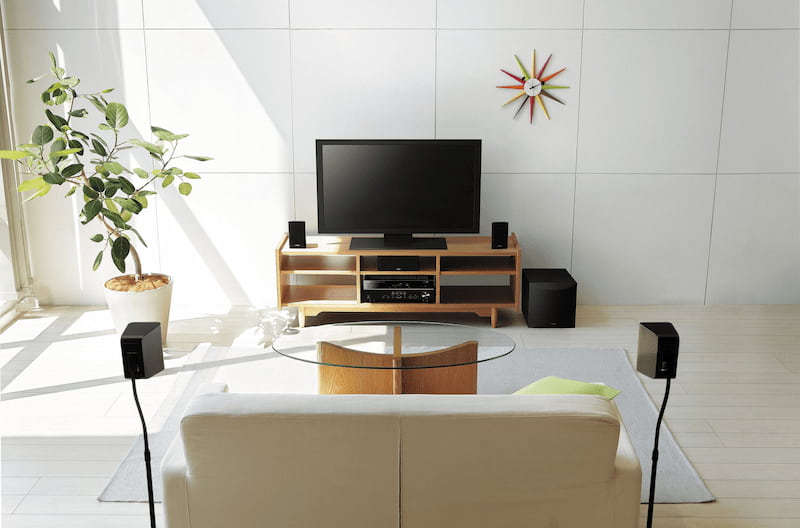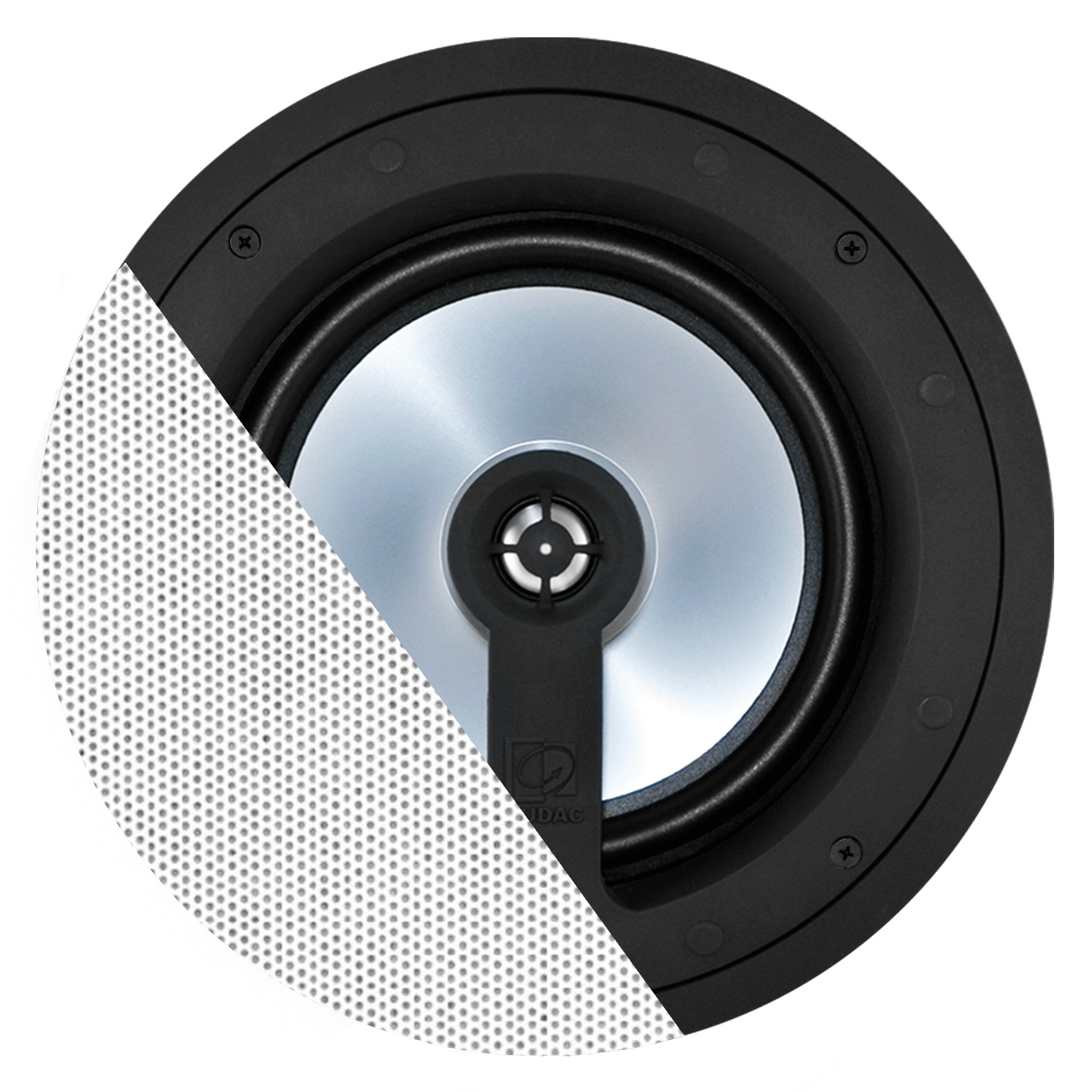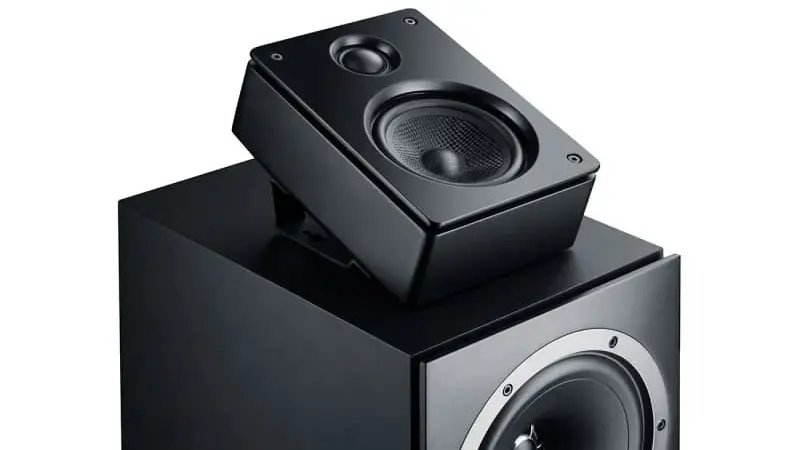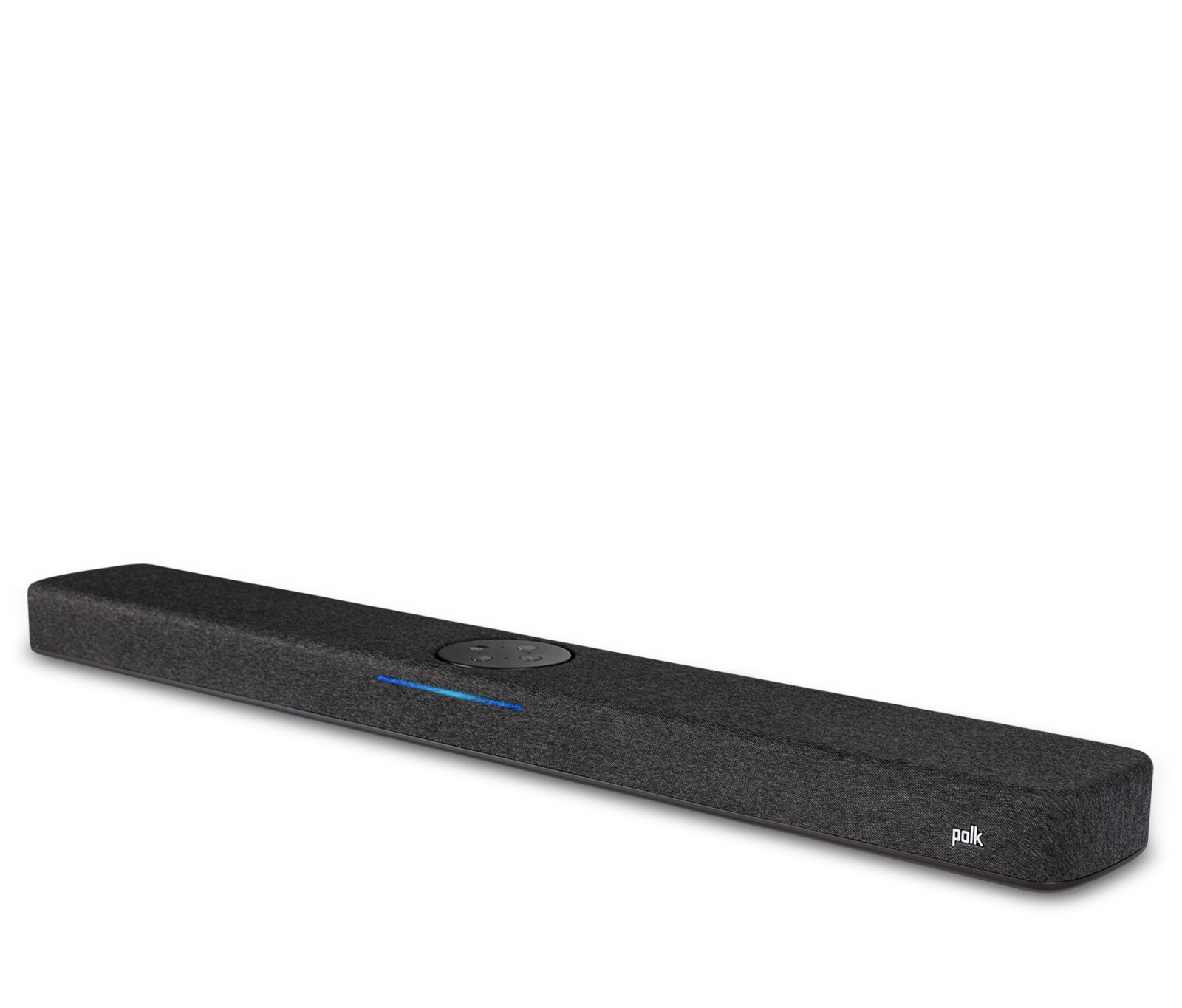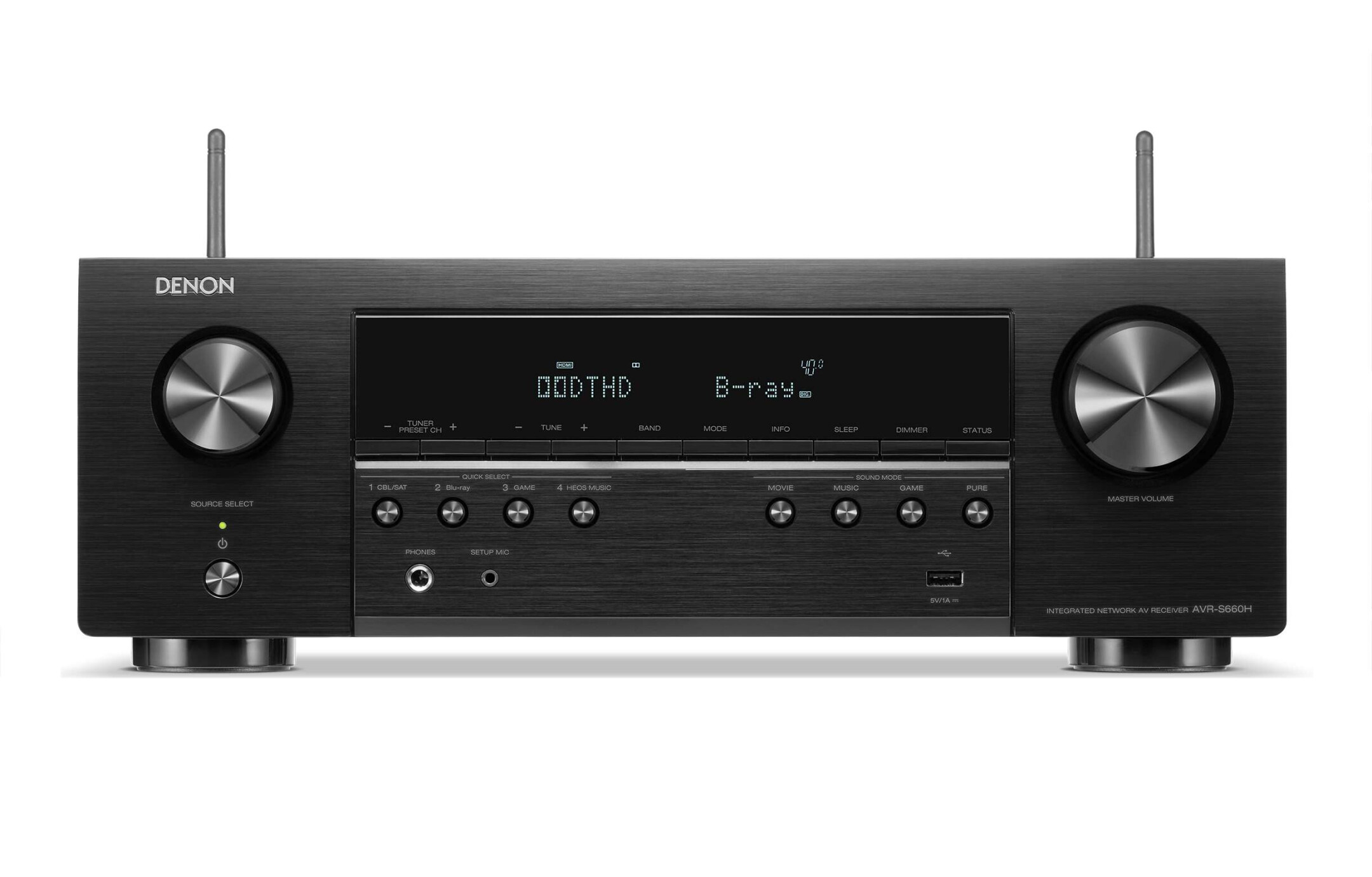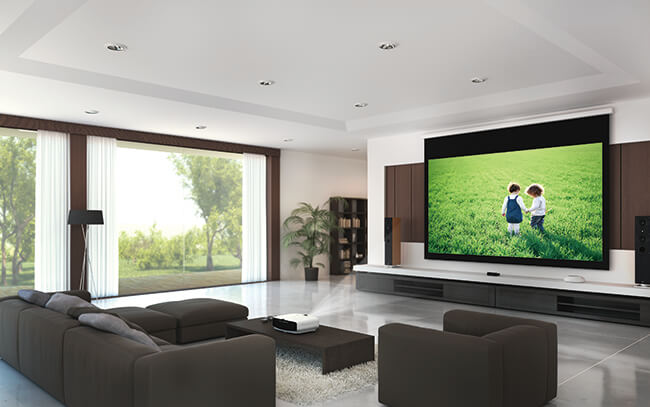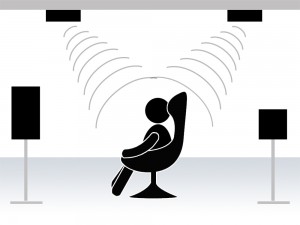Spatial sound is no longer just to be found in films and series. Music and games also promise a new dimension of listening with Dolby Atmos. However, Dolby Atmos only sounds best with the right setup. But what different surround setups are there, and how can existing speaker setups be optimally utilised?
In addition, the drivers are built into the chassis at a precisely defined angle (and direction) and are thus directed towards the ceiling. When the speakers are activated, the sound is emitted in the direction of the ceiling and reflected from it in the direction of the listener.
The speakers are housed in a compact cabinet and contain an upward-firing cone speaker and the Dolby Atmos-certified filters mentioned above. Due to their design, they can easily be placed on top of larger speakers. Alternatively, some Dolby Atmos speakers can also be installed directly in the ceiling to provide the audience with direct sound. In addition, there are Dolby Atmos soundbars in which several speakers are built in directly, simulating a surround sound including height speakers.
The transmission rate (bit rate) and the sampling rate are decisive for the sound quality. A higher value in both categories leads to a clearer and more detailed sound image. The number of channels also plays an important role; a 7.1.4 system offers a more intense, immersive sound experience than a simpler 5.1.2 system.
Using the Onkyo TX-NR3030 11.2-channel AV network receiver as an example, the connection terminals for 4 height speakers can be recognised. Depending on the AV receiver, the 2 speakers are each connected to Height 1 Left/Right. For a total of 4 speakers, Height 2 Left/Right are also used.
Despite these challenges, the benefits are considerable. A well-configured Dolby Atmos system not only offers superior audio quality, but also the ability to precisely position sound objects in the room, resulting in a significantly improved, immersive experience.
While room size influences the number and type of speakers, compatibility is critical to the performance and longevity of the entire system.
In a living room with limited space, top-mounted speakers may be the best solution. These can simply be placed on top of the existing speakers and do not require complex ceiling installation. Some modern also support Dolby Atmos and are ideal for such rooms.
When the calibration program is started, the surround layout is optimised, regardless of whether ceiling or top speakers are involved. The room optimisation methods differ in the number of possible measuring points, filter resolution and post-processing options, depending on the equipment and orientation of the AV receiver.
Dolby Atmos in the home cinema adds a new dimension to the listening experience. With a Dolby Atmos-capable system, not only can impressive sound events, such as aeroplanes thundering overhead, be reproduced, but the acoustics of large halls and buildings also appear much more vivid. Of course, this also applies to film scenes set in the jungle, for example. The additional sound information from above immerses you even more in the action.
- Brands such as Sony, Yamaha, Samsung, Anthem and many others offer a wide range of Dolby Atmos compatible speakers.
- Installing ceiling speakers requires professional mounting, while top speakers can simply be placed on top of existing speakers. A setup wizard in the AV receiver helps with the configuration.
- Yes, a Dolby Atmos compatible AV receiver is required to realise the full potential of the technology.
- Unlike conventional surround systems that only offer horizontal sound, Dolby Atmos also enables vertical sound, creating a three-dimensional sound experience.
- Investing in a Dolby Atmos system is recommended for anyone looking for a truly immersive audio experience. It pushes the boundaries of conventional audio systems and provides an immersive sound experience.
- Dolby Atmos speakers work in addition to surround speakers with specialised ceiling or top speakers that project sound vertically. Together with a Dolby Atmos-compatible AV receiver, they create a three-dimensional sound space.
- There are two main types: ceiling speakers, which are integrated directly into the ceiling, and top speakers, which are placed on top of existing speakers and reflect the sound from the ceiling.
- Room size affects the number and placement of speakers. Larger rooms may require more speakers for an optimal experience.
- Yes, many Dolby Atmos speakers can be added to conventional 5.1 or 7.1 surround systems.
- Dolby Atmos is a sound technology that provides a three-dimensional, immersive sound experience. It allows sounds to be placed in a 360-degree environment.
The most frequently asked questions about Dolby Atmos
Our visunext recommendations:



